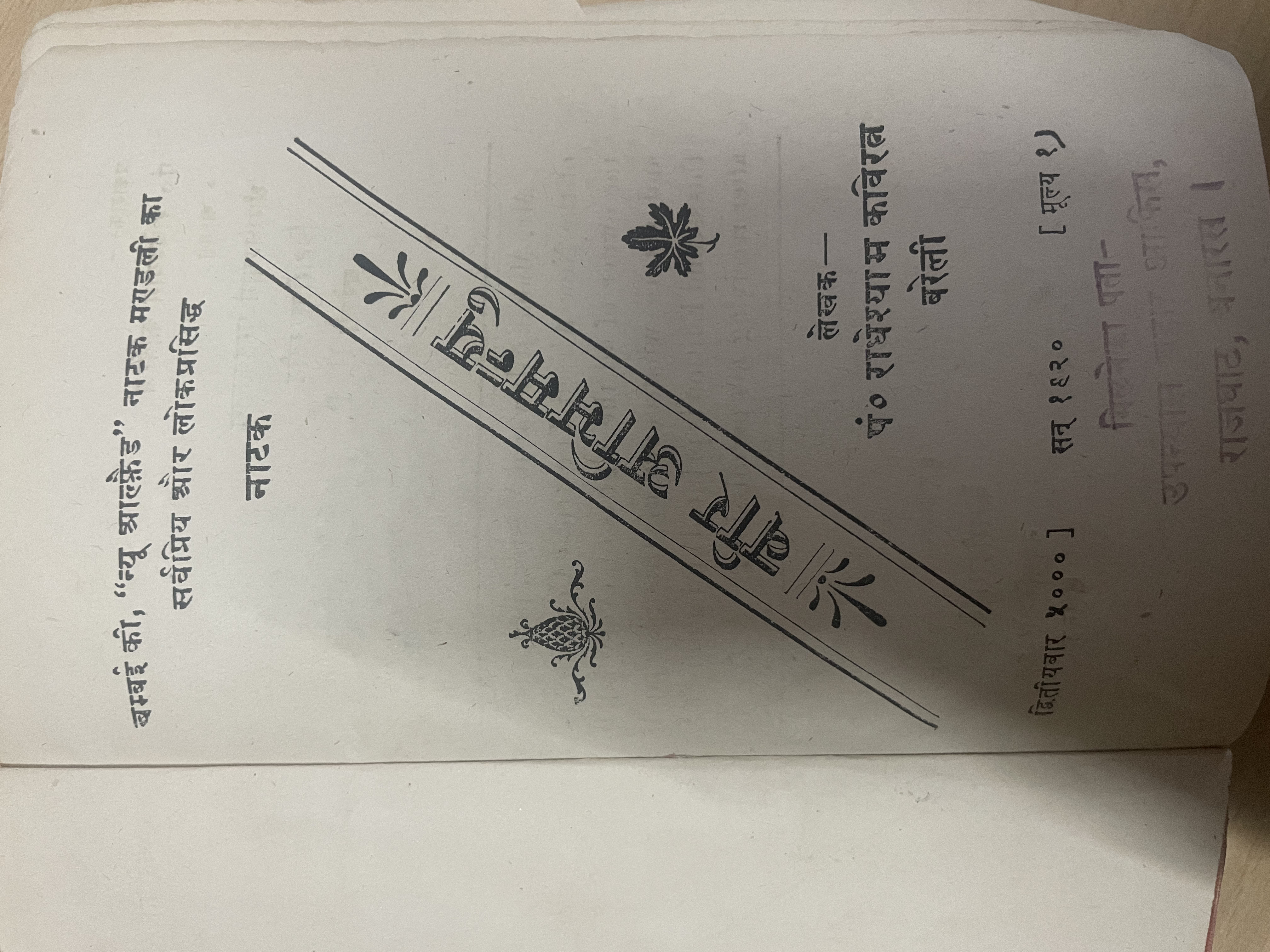Veer Abhimanyu

About
Summary
Exquisite
TOC
Details
Related
URL
Images
Overview
Veer Abhimanyu is a play by Pandit Radheshyam, based on the heroic yet tragic story of Abhimanyu from the Mahabharata.Abhimanyu is the son of Arjuna and Subhadra. He is known for his bravery and skills in archery. He played an important role in the Kurukshetra War.
Early Life and Education: While Subhadra was pregnant, Arjuna told her how to enter the Chakravyuha1. Because Subhadra fell asleep, Abhimanyu only learned how to enter.
Role in the Kurukshetra War: On the 13th day of battle, Abhimanyu was only able to break through the formation of the Chakravyuha.
The Chakravyuha and Abhimanyu's Death: Abhimanyu knew how to enter the Chakravyuha, but not how to get out1. He fought bravely but was unfairly attacked by seven warriors. Abhimanyu died at sixteen years old.
Importance of Book
Pioneering Work in Hindi Theatre: As the first Hindi play in the Parsi theatre tradition, it marked a significant milestone in the development of modern Indian theatre.
Popularizing the Story of Abhimanyu: The play brought the heroic tale of Abhimanyu to a wider audience, making it more accessible and engaging.
Blending Tradition and Modernity: It blended traditional narratives from the Mahabharata with contemporary theatrical techniques and social commentary.
Social Relevance: By incorporating themes of deceit, treachery, and misuse of power, the play resonated with audiences grappling with similar issues in their own lives.
Key Themes
Courage and Sacrifice: Abhimanyu's unwavering courage in the face of overwhelming odds exemplifies the qualities of a true warrior.
Dharma and Duty: Abhimanyu's adherence to dharma, even in the face of death, underscores the importance of fulfilling one's duty.
The Tragedy of War: The play likely portrays the tragic consequences of war and the loss of innocent lives.
The Power of Knowledge: Abhimanyu's knowledge of the Chakravyuha, though incomplete, highlights the importance of knowledge and skill.
Cultural Significance
Reinterpretation of a Classic Tale: The play offers a fresh interpretation of a classic story from the Mahabharata, making it relevant to contemporary audiences.
Reflection of Social Values: It reflects the social values and concerns of the time, addressing issues of power, corruption, and the importance of righteousness.
Contribution to Indian Theatre History: The play is a significant contribution to the history of Indian theatre, marking the beginning of Hindi theatre in the Parsi tradition.
Popular Entertainment: As a popular form of entertainment, the play brought joy and inspiration to audiences across India.
Effects on Society
Popularizing the Mahabharata: The play helped popularize the Mahabharata and its characters, making them more accessible to the masses.
Promoting Ethical Values: By highlighting the importance of dharma and righteousness, the play may have influenced people's ethical values and behavior.
Encouraging Social Awareness: By addressing issues of power and corruption, the play may have encouraged social awareness and critical thinking.
Inspiring Patriotism: The play's themes of courage and sacrifice may have inspired patriotism and a sense of national pride.
Contributing to Cultural Identity: By celebrating Indian culture and traditions, the play may have contributed to a sense of cultural identity and cohesion.
Conclusion
Pandit Radheshyam's Veer Abhimanyu is a significant play that retells the story of Abhimanyu from the Mahabharata while also offering social commentary on issues of power, corruption, and righteousness. As the first Hindi play in the Parsi theatre tradition, it marked a milestone in Indian theatre history and likely had a lasting effect on the country and society by popularizing the Mahabharata, promoting ethical values, and encouraging social awareness.
Title
Veer Abhimanyu
Author
Pandit Radheshyam
Name of Publisher
Pandit Radhesyam Pustkalya Bareli
Publish Date
1920
Subject
This book focuses on the life and exploits of Abhimanyu
Vintage
1901-1947
Edition
Second
Number of Pages
225
Category
Religion/Spirituality
Sub Category
Social Sciences
Rarity
RARE
